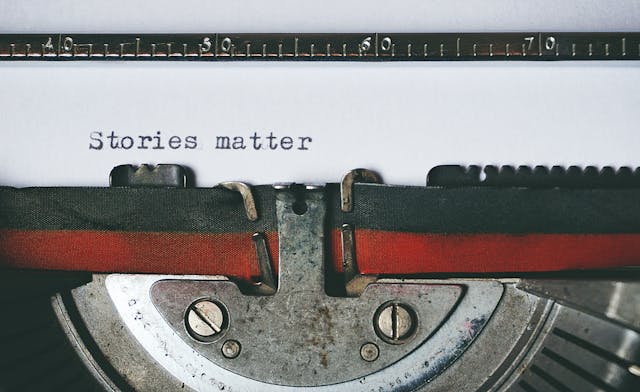A lot of my thoughts these days are trying to knit together a clear assessment of the new era that we’ve been thrusted into. One of the most challenging threads is the one that analyzes the computer-manufactured creations that seem to be taking over our world. As a person, I grapple with the inevitability of a «digital» world and try to remain as offline as I can without completely disconnecting myself from my circles. As a writer, I wonder if all this «A.I. training» that results in machine-produced literary works that replicate authors’ styles will disintegrate my will to tell more stories. These «robots» can churn out stories about any prompted subject in seconds, with a large variety of styles and word choices, so they can produce multiple narratives in the time it takes me to draft one. But that’s not the discouraging part. Younger generations of readers, as they increase their reading capacities, are getting their information and their stories via «a.i. copy» almost as much as human-made copy, and more often than not (in my experience) they don’t seem to care or understand the relevance of word choices.
The most popular reason I’ve heard of why people read fiction books is because they’re interested in the story and the characters; it connects them to their inner world and the narrative transports them to the world within the pages. But there’s a third element that most don’t account for. Characters and the story/stories that they go through are what they are because of the specific person that wrote them. There’s a fun exercise that I practice with students that shows this in a very clear way. I start by telling them I will write «something simple» on the blackboard and they have to pay attention. I proceed then to write a few simple additions and subtractions, to keep it uncomplicated. When I’m done, I ask the group if they understand everything that’s on the board. Once they all say yes, I ask them to tell me if the calculations are correct (which they are). After they all concur, I ask them to please write down a short narrative of what they just witnessed. Indeed, the results are quite diverse. Even though they are all in the same place at the same time experiencing the same event, each one narrates it differently. Some focus on the math, others on the context, others have more to say about who was there and what where they doing. The learning behind this practice is the recognition of different perspectives as a pathway towards empathy. In relation to this particular article, it showcases the importance of the storyteller and how it impacts the content and details of the narrative.
Those who create baking goods for a living can distinguish quality levels and nuances of different vanilla extracts, and become attuned as to when to use each for what. Similarly, those of us who create stories as a way of life can identify language levels and choose words that say what we want to say in the precise way we want the character(s) to say it. This way, we can offer the reader an enjoyment of the story, the character, AND the person that created them, which connects them to our SHARED HUMANITY.
This is the fundamental point for me. Reading Valeria Luiselli and Kathryn Schulz is more than just reading about teeth collectors or memories of a dying father… it’s going inside their world and encountering THAT specific experience as lived through their personal human composition. It’s finding out what each of them notices, how they see the world, and flowing through the nouns, verbs, and idiomatic expressions that they select to tell their tales. I love reading a story by an author whose work I’ve read before and smiling when I find a familiar phrase – «Ah, there you are, old friend.» A feeling that those of us who were lucky enough to receive love letters in our lifetime know very well.
Such connection is non-existent with machine-generated «anecdotes». When the human experience is stripped from storytelling, the spirit inside the narrative is amiss. All we are left with are empty words that stand for no one, have no context, no backstory, not even a radical shift in opinion. Stories, storytelling, language, conversation… they are all at the center of the human experience. Like the rest of the «creative arts», it defines our cultures, our societies, and our futures. As I hold on to my determination to continue on the journey of creating stories for children, I wrote this piece to nudge you, my reader, to continue to read (or listen to) other human-created tales from the extensive and diverse array of living and past authors, and discover within the sentences, the shared experiences that connect you to them.
PS. Yes, this was written and revised by a human. I did double-check the spelling with the computer and search for synonyms on the online thesaurus, but I selected each and every word, just for you.
Picture by Suzy Hazelwood.




